WEDNESDAY WICKER WISDOM — There are three main types of chair cane seats. Really, did you know that? Can you identify and name them all? Learn the differences between hole-to-hole cane, sheet cane, and porch cane.
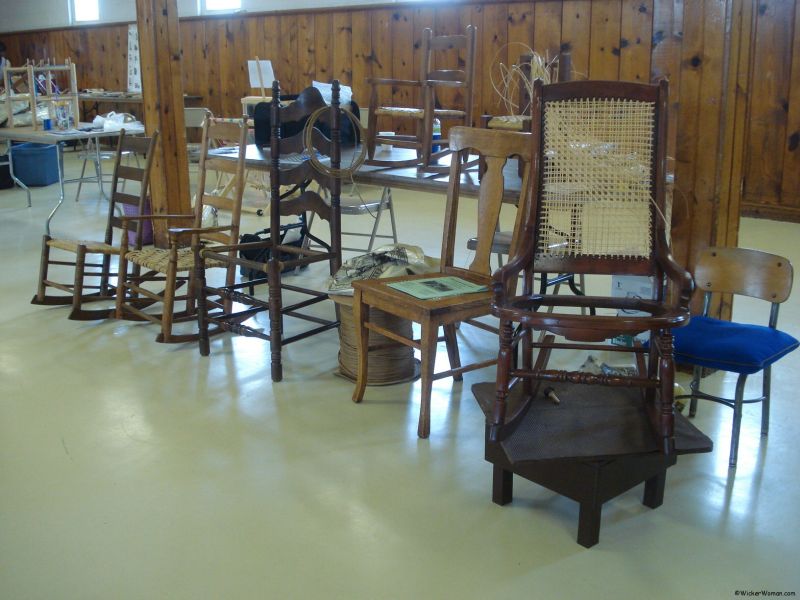
Here’s a little hint about the three names of chair caning to choose from ~~
Do YOU know the difference between these cane seat patterns and materials?
- hole-to-hole cane, hand caning, or lace cane seat
- pressed cane, spline cane, cane webbing chair seat
- porch cane, wide binding cane, or New England cane seat
1. Here’s an example of the hole-to-hole cane, traditional hand caning, or lace cane seat where the individual strands of cane are hand woven through a series of drilled holes around the perimeter of the chair seat frame.
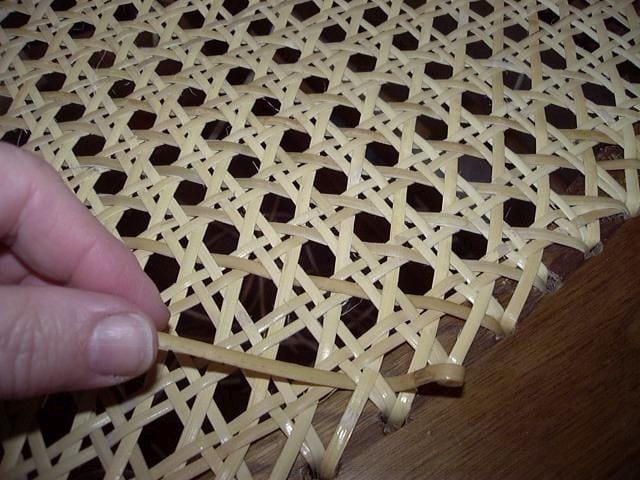
2. This is an example of a spline cane seat, sheet cane or cane webbing seat where the machine-woven sheet of cane is tamped into a groove that’s been routed out around the perimeter of the chair seat and held in place with a reed spline.
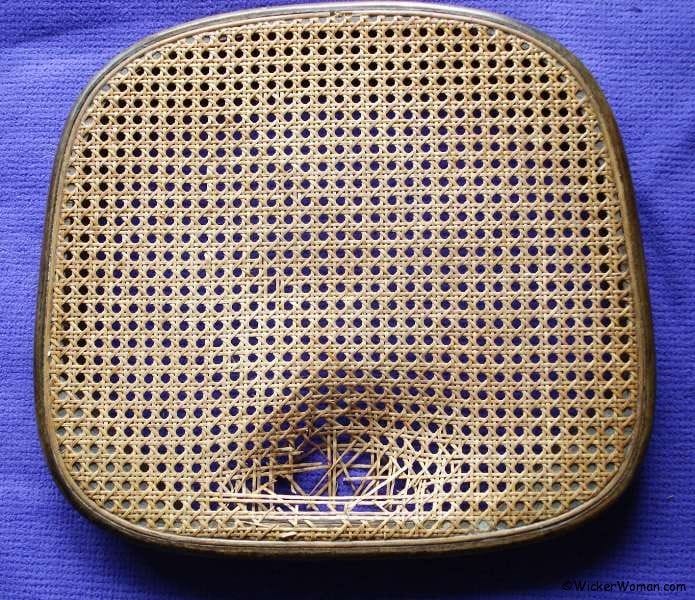
3. And here is an example of a wide binding cane seat, porch cane or New England style cane seat, where the wide binding cane strands are woven around the seat frame rungs both top and bottom creating a double layer of cane.

Frequently the design on the top of a stool or chair seat would be in a diamond pattern with a simple twill or herringbone pattern on the bottom or back. This type of chair seat pattern using this material was/is very popular with chairs and rockers used outside on a porch, hence the name, “porch cane seat.”
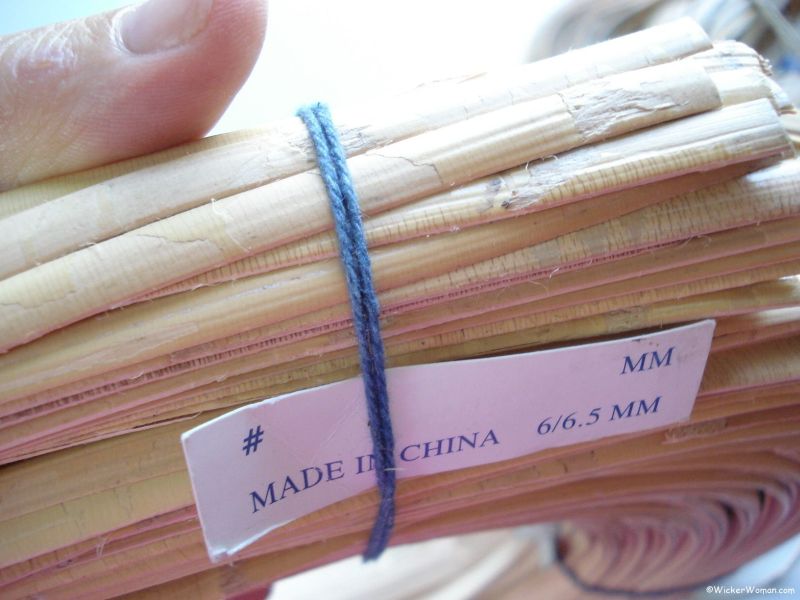
Example of wide binding cane footstool with dyed cane accentuating the diamond pattern weave. The bottom of this footstool is woven using a simple 4×4 twill pattern.
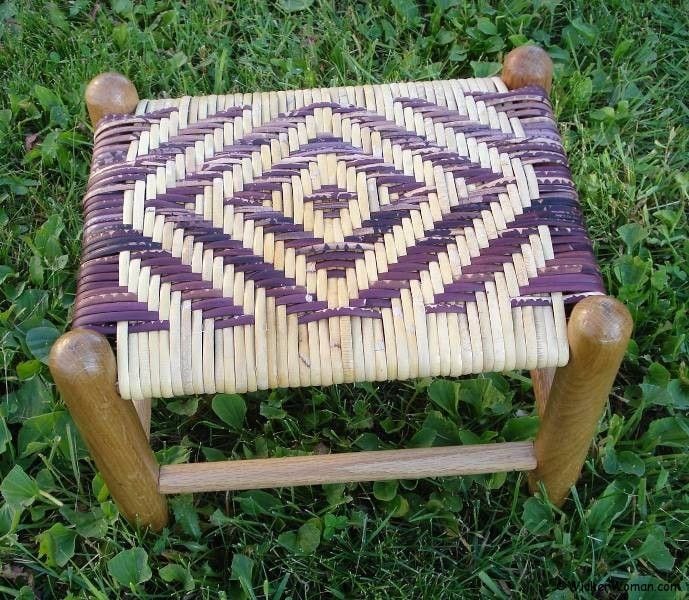
Well, now, you will be able to go into any antique store, flea market, or used-a-bit store and spot the three types of chair caning and know what materials are needed to fix them! Congrats!
See the Cane ↦ Basket Directory™ right here on WickerWoman.com if you need some weaving materials and want to see detail pictures of them along with tools to complete your project.
And if you are not quite ready for that DIY chair caning project and want someone else to do the repairs for you, visit all the Seatweaving Experts listed in the National Furniture Repair Directory™, here too.

What are your thoughts about this blog post?
Leave your comments below and share with your social networks!
~~Live Well, Laugh Often, Love Much ~~
Happy Weaving, until next time!


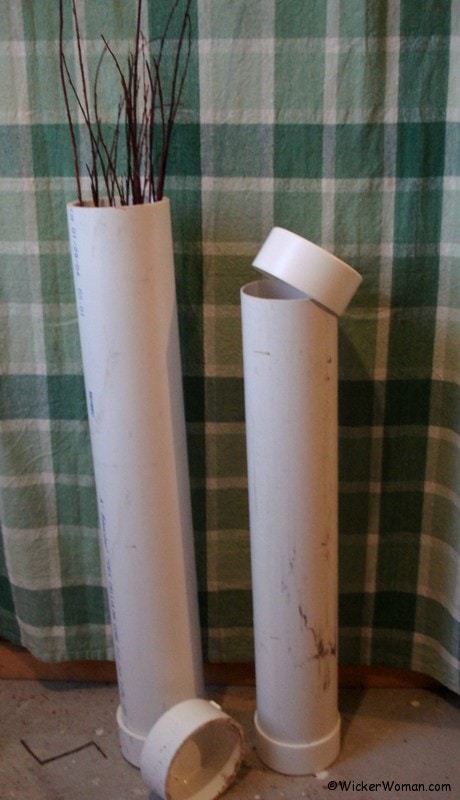
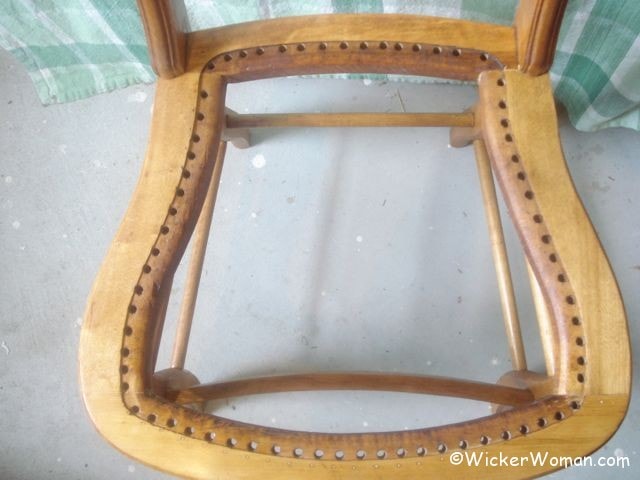
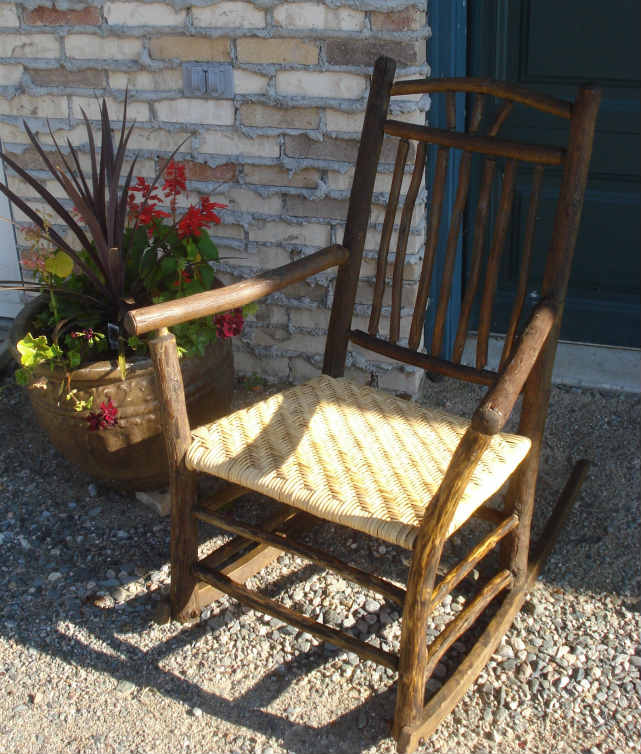
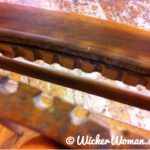
Hi Cathryn
I am hoping to repair the base of some outdoor chairs that have cane that is flat on one side and curved on the other wrapped around the chair leg posts. It is 6mm wide. Do you know the name of this cane please?
Hi Alison,
You might be talking about either 6MM wide chair cane or wide binding cane or you might need 6MM rattan reed. Both are used in wrapping chair legs but most of the time the rattan was used more so than the cane because it can be either stained or painted. Whereas, the cane has a glossy finish that does not accept stain or paint well at all.
Since I do not sell supplies, check with all the businesses on the Cane and Basket Supplies Directory™ and compare the pictures in their catalogs to what you are searching for. You can also call them on the phone and ask your question directly and send pictures.
My grandmother was always doing it. She learned it at night school. I remember days when the bathtub was full with the equipment for another chair. A lost art!!?
Hi Elizabeth,
I’m so happy you have that lovely memory of your grandmother and her chair caning days! Chair caning and other types of seatweaving is not really a lost art because there are still plenty of us around that are in the profession and promoting the art form. Through my efforts here on the website and in person, and through the members of The SeatWeavers’ Guild, Inc., we are still repairing furniture for customers, teaching classes to the public, giving presentations and demonstrations to keep the art and craft of chair seat weaving alive and flourishing for many years into the future.
I’m interested in using radio weave or other pressed cane in the backs of a pair of old chairs that were upholstered. Unfortunately, there are no grooves. How difficult would it be to route grooves to accommodate the cane and spline? Can this be accomplished cleanly? Thank you.
Hello Gina,
Sorry to hear about your chair backs that you’d like to apply cane webbing to, but unless you are a very skilled woodworker, I would advise you not to try and cut in the grooves yourself as a DIY project. A skilled woodworker could do it but it can be a very difficult project. Not interested in reupholstering it as the manufacturer intended? Good luck with whatever decision you make, hope it all turns out well for you.
I have ladder back chair which needs sea grass seat
Hi there Peter,
I am not certain what you are asking here with your ladder back chair that needs a seagrass seat. Do you want to have a professional reweave the seat for you? If so, you can go to my National Furniture Repair Directory™ and select a specialist near you to do the repairs. On the other hand, if you are looking for seagrass material to buy, so you can weave the seat yourself, check with the supply companies listed on my Cane and Basket Supplies Directory.™ Hope this helps!
Dear Cathryn,
I re-caned a seat using your instructions. I am so pleased with the results that I have completed a test seat of daisy and button using a picture from your collection. In South Africa we do not have guilds but have to reply on Internet and books. Thank you for your inspiration and instructions.
Marie
Oh Marie, I’m so happy to have been of help to you! Thanks so much for visiting my site and using the caning instructions. Hopefully, you’ll be able to continue and make this a life-long endeavor! Please share my site with your family, friends and social networks! Have you subscribed to my newsletter yet? Happy Weaving!
Great information. I am going to repair a childs chair with flat material. I have 3/8’s inch and 5/8’s inch. Both bind when I get to the front of the chair. I am using the Herringbone pattern. How do I find out what size to use? Do you have that size? How much is it? Thank you. Charles Champagne
Hello Charles,
Thanks for visiting my website, sorry you are having troubles with the child’s chair though. I don’t really understand what you mean by the material binding at the front. Usually, when you are weaving a seat with flat materials, i.e., flat rattan reed, binding cane, hickory bark, ash and oak there is no binding on the front rail. It usually lays nice and flat around the rails. You start with the vertical strands from front to back, then weave the horizontals and fill in the gussets on either side, last. Here’s a blog post you might find interesting too, What’s your slant with flat materials?
Sounds like you might not be following instructions though and are maybe just using the former seat as a pattern? I would suggest you either purchase for your own personal reference library or check some out at your local library so you get the weaving done correctly. See my Seatweaving FAQ page for the seat weaving instruction books I think are the best and will be of the most benefit to you.
Wishing you all the best! Let me know how the chair turns out!